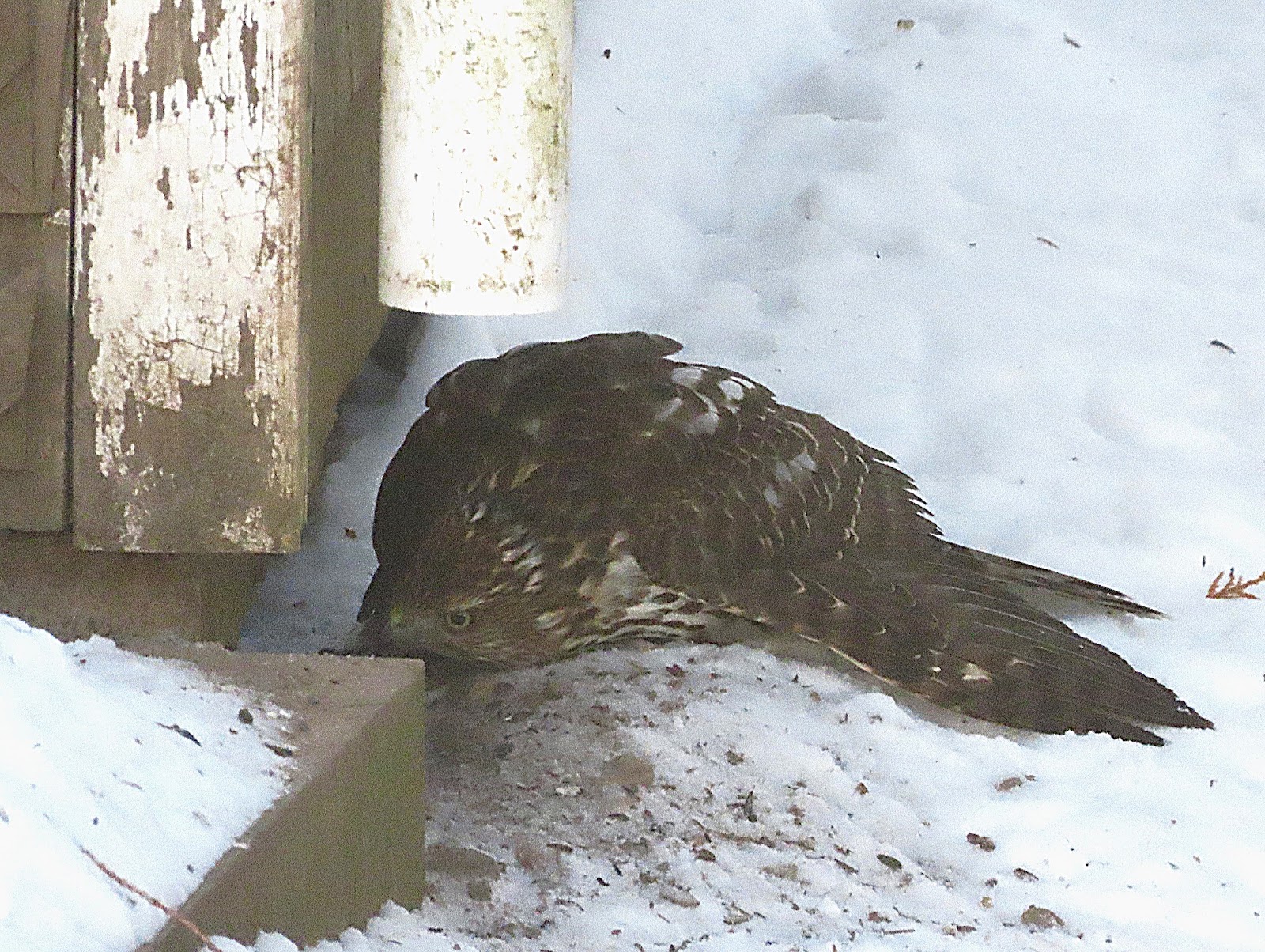NATURE MONCTON NATURE NEWS
February 7, 2025
Nature Moncton members as well as any
naturalist in New Brunswick or beyond are invited to share their photos
and descriptions of recent nature sightings to build a fresh (almost) daily
edition of Nature News
To respond by e-mail, please address your message to the
information line editor, nelsonpoirier435@gmail.com .
Please advise the editor at nelsonpoirier435@gmail.com
and proofreader Louise Nichols at Nicholsl@eastlink.ca if
any errors are noted in wording or photo labelling.
For more information on Nature Moncton, check the website
at www.naturemoncton.com.
Proofreading courtesy of Louise Nichols
**Jane LeBlanc was pleased to see a ruffed grouse in her birch tree this week. They are normally there as soon as there is snow on the ground, but this year, they were absent. Jane was worried as her neighbour had seen a coyote on their door camera.
She also saw a song
sparrow in her feeder. The hermit thrush that had been coming to
mountain ash berries has been missing for a few days.
**Bob Blake reports anyone wishing to see snow
buntings can do so at the Wesselius’s farm location on Wheaton Settlement
Rd. They saw hundreds there on Wednesday when they passed by.
**Suzanne Rousseau in Sussex reports she is enjoying a
pair of northern cardinals in her feeder yard daily now.
(Editor’s note: it is so rewarding to see this beautiful
species appearing in more feeder yards throughout New Brunswick each year.)
**Despite window glare, John Inman got photos of a cooper’s
hawk that was hunting a rat under the baby barn in his Harvey yard.
**This Week’s Sky at a Glance, 2025 February 8 –
February 25
We are more than halfway to spring and, as Lord Tennyson wrote in his poem
Locksley Hall, “in the spring a young man’s fancy turns lightly to thoughts of
love.” With Valentine’s Day this week the goddess of love is sharing the sky
with her father. Venus is the Roman counterpart of Aphrodite, the Greek goddess
of love. She was the daughter of Zeus (Jupiter to the Romans) and Dione, which
is the name of one of Saturn’s moons. After sunset the planet Venus is high in
the west in the constellation Pisces, much brighter but lower than her father
in Taurus to the south.
Venus is not the only love object in the night sky. In 1898 astronomers
discovered the first asteroid that was known to come closer to the Sun than
Mars, one that nearly reaches Earth’s orbit. This 33 x 11 kilometre rock was
named Eros for the son of Aphrodite, and to the Romans he was known as Cupid.
In mythology the Olympians were frightened at the seashore by Typhon, the most
horrible monster of the rival Titans. Venus and Cupid knew they would be safe
in the water, but before changing into fish they tied their feet together so
they would not lose each other in the sea. This act is immortalized as the
constellation Pisces, depicting two fish bound together at the tails. Another
astronomical valentine, and a favourite of astrophotographers, is the Heart
Nebula in Cassiopeia the Queen.
This Week in the Solar System
Saturday’s sunrise in Moncton is at 7:32 and sunset will occur at 5:35, giving
10 hours, 3 minutes of daylight (7:35 and 5:42 in Saint John). Next Saturday
the Sun will rise at 7:21 and set at 5:45, giving 10 hours, 24 minutes of
daylight (7:25 and 5:52 in Saint John).
The Moon is full on Wednesday, the Mi’Kmaq Snow Blinding Moon. On Valentine’s
Day Venus is at its greatest illuminated extent, glowing at its brightest. As
Venus nears us in the evening sky it appears larger in a telescope but the
phase decreases from near full to slim crescent. At some point, which occurs
about five weeks before inferior conjunction, we see the maximum sunlit area.
The same effect occurs in the morning sky five weeks after inferior conjunction
as the planet recedes and the phases reverse. Saturn appears increasingly lower
in the sky below Venus as it heads toward solar conjunction in a month. Jupiter
is at its highest around 7:30 pm, followed by Mars two and a half hours later.
Mercury is at superior conjunction this weekend, moving toward a favourable
evening apparition in a couple of weeks.
Tune in to the Sunday Night Astronomy Show at 8 pm on the YouTube channel and
Facebook page of Astronomy by the Bay.
Questions? Contact Curt Nason at nasonc@nbnet.nb.ca.
Nelson Poirier
Nature Moncton



